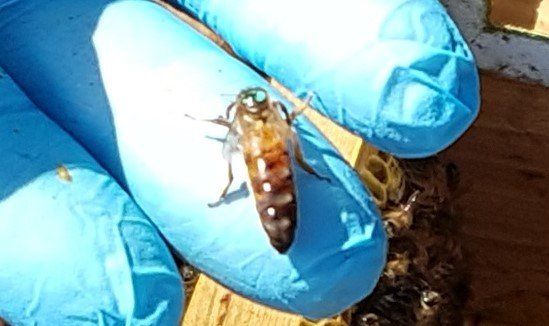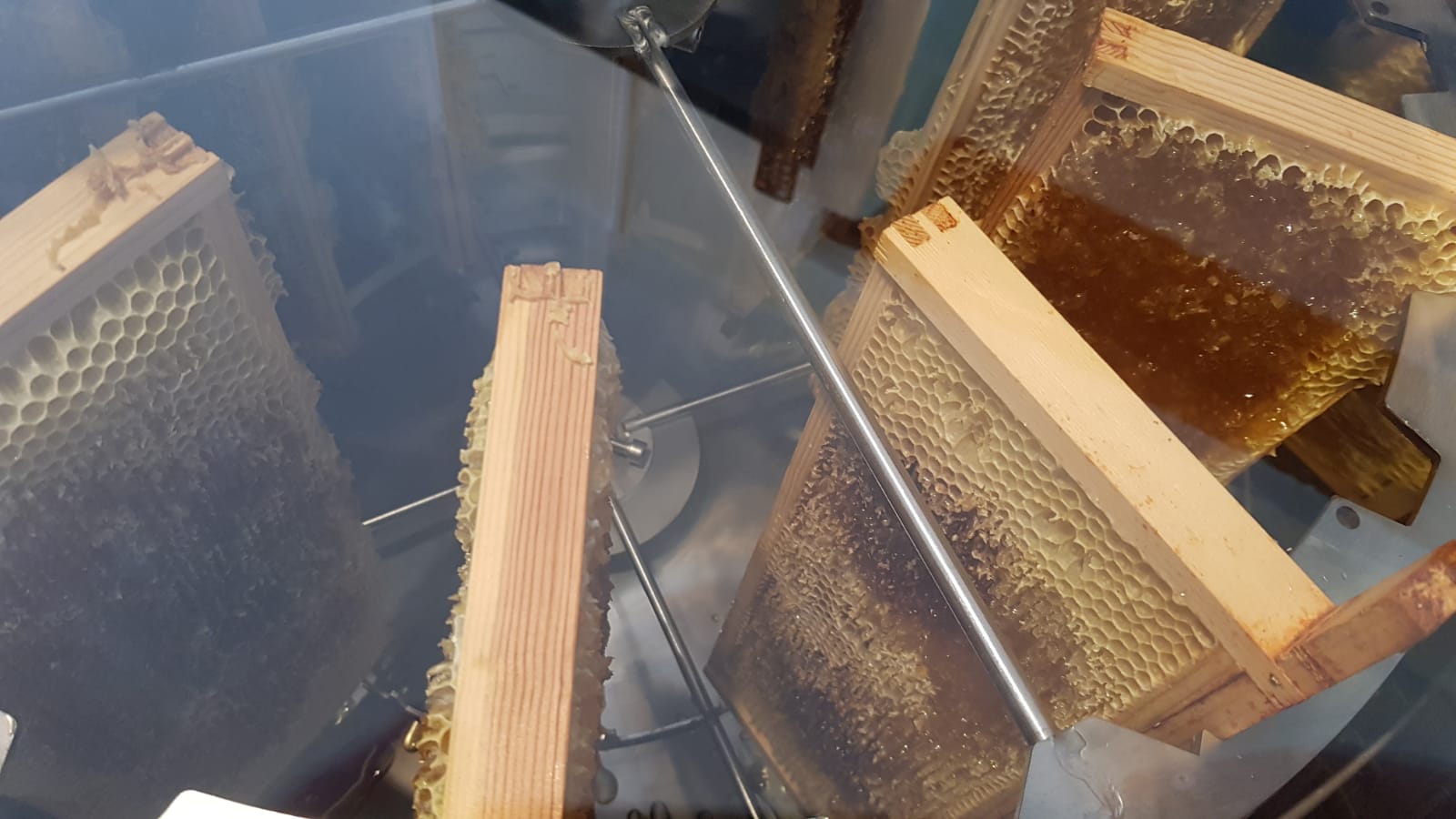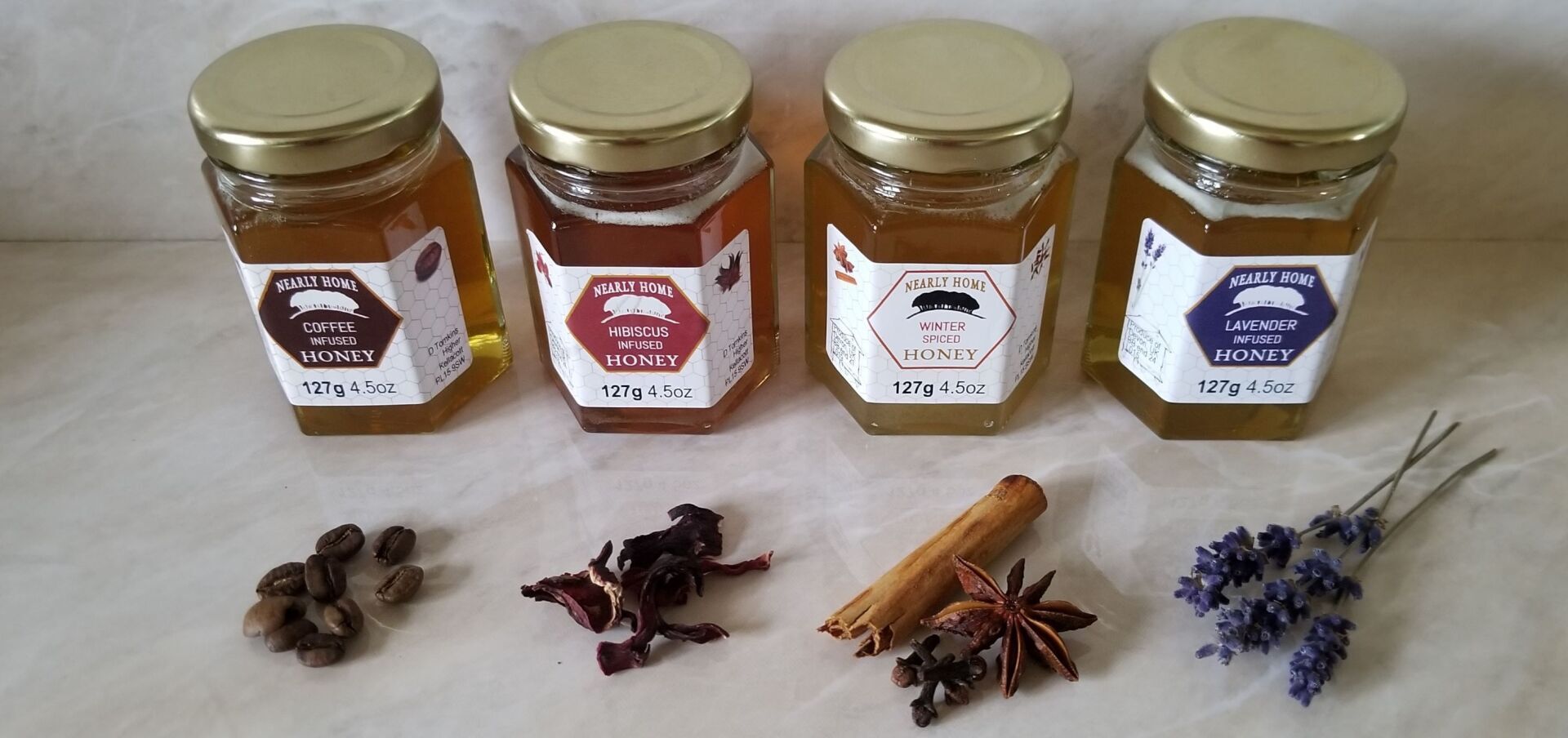The Bees
Our bees are kept in our Higher Kellacott apiary and other locations in West Devon and Dartmoor. They are a strain of Honey Bee (Apis Millifera) known as the Buckfast Bee, which was developed by Brother Adam, a Benedictine Monk at the Buckfast Abbey in Devon who was a Beekeeper for over 70 years. The Buckfast Bee is extremely gentle and highly productive.

The Worker
On average there are between 20,000 and 80,000 worker bees in each hive, depending on the size of colony and the time of year. These bees are the engine house of the hive, with roles ranging from guarding the hive, foraging up to 3 miles for pollen and nectar, to building the comb and looking after and rearing the brood. Their lifespan ranges from 6 weeks during the busy summer season to up to 4 months over the winter months.

The Queen
There is just one queen bee in each hive. Her role is to lay eggs in the cells prepared by the worker bees. On average she will lay up to 2,000 eggs a day throughout the summer, meaning that in her lifetime, she will lay in the region of 2,000,000 eggs. Apart from her flight to mate with drones she will never leave the hive, unless of course the colony swarms, taking half of the worker bees with her; leaving the other half of the colony to raise a new queen.

The Drone
Drones are the only male bees in the hive, only being present throughout the summer season, with their role being purily to mate with virgin queens. They are noticeable by their large size and domed abdomen. One of their key characteristics is that they do not have a sting. They also do not feed themselves, so rely on the worker bees for this. They are expelled from the hive by the worker bees towards the end of the summer.
The Honey
Bees collect nectar throughout the summer months, storing this in various parts of the hive. Initially they store it in frames of the brood box which are not being used to rear the brood. Kept close by, this honey is used to feed the young brood. When these storage areas are full, the bees store excess honey in Honey Supers, which are placed above the brood boxes. This surplus honey is what is removed by beekeepers.

In the hive
Honey supers are placed above the brood chamber, so that the bees can store excess nectar that is not being used to rear the brood, feed the queen or utilised to produce wax. They are gradually filled with nectar, which is then turned into honey by a process of evaporation. Finally the bees cap each individual hexagonal honey cell with a thin layer of wax, which makes a perfect seal to keep it fresh until needed.

Extracting the Honey
All our honey is extracted in small batches throughout the summer months, the supers being removed from the hives as soon as the honey is ripe. This ensures a distinctive yet subtle flavour to our honeys, which reflect the different characteristics of the flowers which blossom at different times of the summer season. Each frame is removed from the super, uncapped and extracted, before being cleared and left to settle overnight.

Finished Product
The cleared honey is bottled by hand into 8 or 12oz hexagonal jars. Some honeys will remain in their liquid state, however, particular nectar sources, such as oil seed rape and dandellion, will granulate very quickly, producing a hard set honey.
Although most honey is extracted from the comb and bottled, heather produces thixotropic honey, which cannot be spun out of the combs, so this is cut and sold in 8oz cut comb containers.

Infused Honeys
We have a range of infused honeys available to purchase. For each infused honey the herb/spice is added to raw honey and left for up to 28 days, allowing its flavour and sometimes natural colour to infuse into the honey, producing a subtle yet distinct flavour. They can be enjoyed on toast or drizzled over yoghurt or ice cream. The price of the finished product reflects the lengthy process involved and the uniqueness of these infused honeys.










